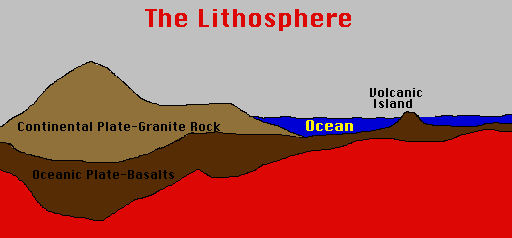The indo australia plate stretches from australia to india.
The major place where granitic continental crust is manufactured is.
But they are widely considered to be two separate plates.
It is the lower density of quartz plagioclase and feldspar containing granites which made them enter the upper crust in the first place not only as low density granitic melt but also by diapirism via plastic flow.
Granites can be predominantly white pink or gray in color depending on their mineralogy the word granite comes from the latin granum a grain in reference to the coarse grained structure of such a completely crystalline rock.
These plumes then rise upward into continental crust to form granitic plutons or a variety of volcanic features on the earth s surface.
They also have more oxygen thanks to the atmosphere.
Tectonic plates are pieces of earth s crust and uppermost mantle together referred to as the lithosphere the plates are around 100 km 62 mi thick and consist of two principal types of material.
The continental crust is that part of the crust that makes up the earth s surface.
Continental crust above sea level comprises 29 of the earth s crust but when submerged continental crust is taken into account continental crust amounts to 41 of the total crust.
Oceanic crust also called sima from silicon and magnesium and continental crust sial from silicon and aluminium.
In fact about 40 of the surface of the earth is made up of this layer.
The continental crust has a density of.
Granite ˈ ɡ r æ n ɪ t is a common type of felsic intrusive igneous rock that is granular and phaneritic in texture.
Continental crust is the layer of igneous sedimentary and metamorphic rocks that forms the geological continents and the areas of shallow seabed close to their shores known as continental shelves this layer is sometimes called sial because its bulk composition is richer in silicates and aluminium minerals and has a lower density compared to the oceanic crust called sima which is richer in.
Continental crust is broadly granitic in composition and with a density of about 2 7 grams per cubic cm is somewhat lighter than oceanic crust which is basaltic i e richer in iron and magnesium than granite in composition and has a density of about 2 9 to 3 grams per cubic cm.
Since some 75 of continental crust is covered by either sediments or water geophysical measurements are a very important source of information about the properties of the continental crust.
It also includes the oceanic crust from the indian ocean.
The rocks in this layer are made up of light colored granite rich in minerals and substances like aluminum oxygen and silicon.
Strictly speaking granite is an.
Plumes of magma from the earth s asthenosphere are generated from the friction produced at the contact zone where oceanic crust slides past continental crust.
The north east side of the australian plate converges with the pacific plate.
In terms of minerals granite has even more feldspar and less amphibole than basalt and almost no pyroxene or olivine.
Granitic rocks are even less dense than basalt.
The continental crust is made of granitic rocks which have even more silicon and aluminum than the basaltic oceanic crust.

